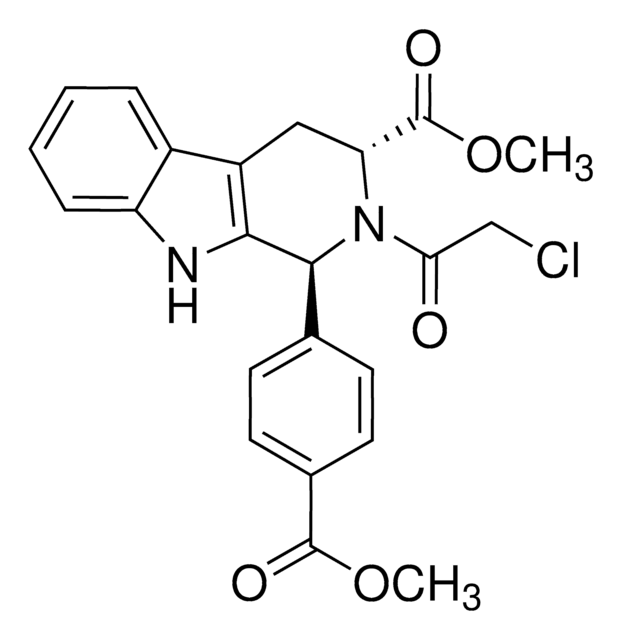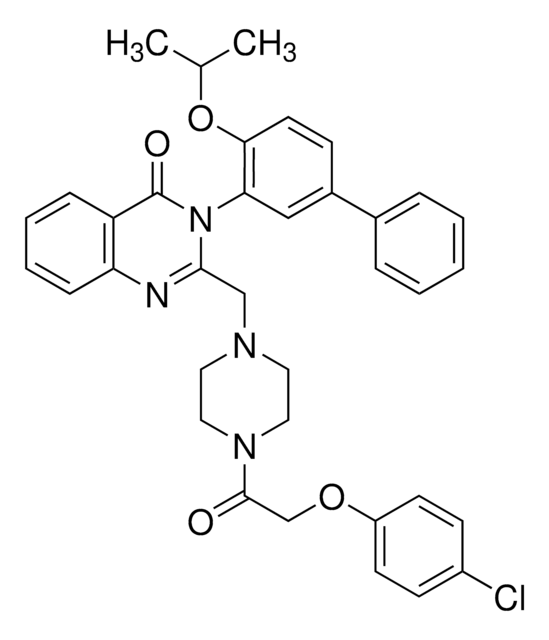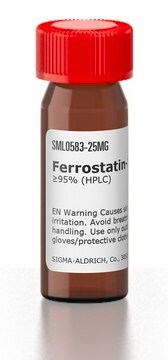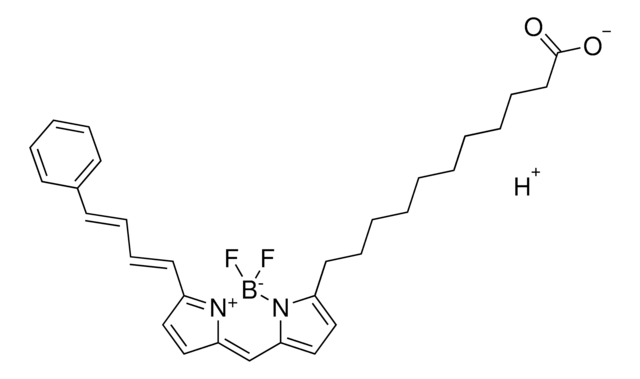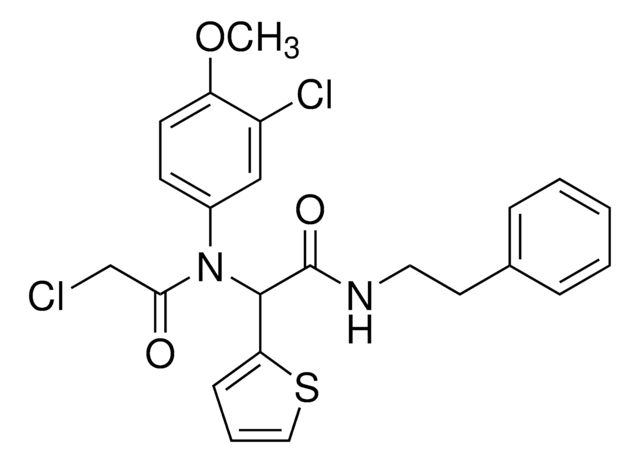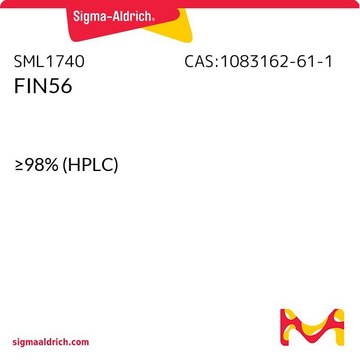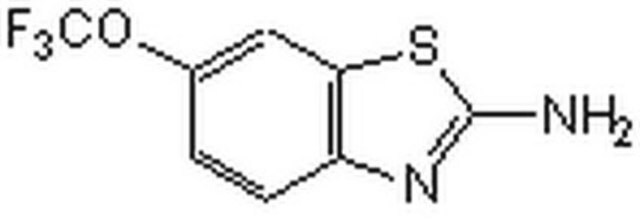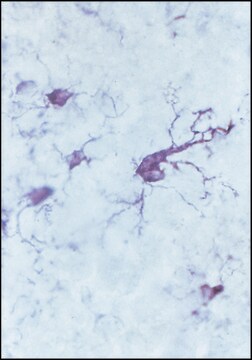SML0521
ML 210
≥98% (HPLC)
Sinónimos:
CID 49766530, ML-210, [4-[Bis(4-chlorophenyl)methyl]piperazin-1-yl]-(5-methyl-4-nitro-1,2-oxazol-3-yl)methanone
About This Item
Productos recomendados
Análisis
≥98% (HPLC)
formulario
powder
color
white to beige
temp. de almacenamiento
2-8°C
cadena SMILES
Cc1onc(C(=O)N2CCN(CC2)C(c3ccc(Cl)cc3)c4ccc(Cl)cc4)c1[N+]([O-])=O
InChI
1S/C22H20Cl2N4O4/c1-14-20(28(30)31)19(25-32-14)22(29)27-12-10-26(11-13-27)21(15-2-6-17(23)7-3-15)16-4-8-18(24)9-5-16/h2-9,21H,10-13H2,1H3
Clave InChI
VIBHJPDPEVVDTB-UHFFFAOYSA-N
Aplicación
Acciones bioquímicas o fisiológicas
Palabra de señalización
Warning
Frases de peligro
Consejos de prudencia
Clasificaciones de peligro
Acute Tox. 4 Oral
Código de clase de almacenamiento
11 - Combustible Solids
Clase de riesgo para el agua (WGK)
WGK 3
Punto de inflamabilidad (°F)
Not applicable
Punto de inflamabilidad (°C)
Not applicable
Certificados de análisis (COA)
Busque Certificados de análisis (COA) introduciendo el número de lote del producto. Los números de lote se encuentran en la etiqueta del producto después de las palabras «Lot» o «Batch»
¿Ya tiene este producto?
Encuentre la documentación para los productos que ha comprado recientemente en la Biblioteca de documentos.
Nuestro equipo de científicos tiene experiencia en todas las áreas de investigación: Ciencias de la vida, Ciencia de los materiales, Síntesis química, Cromatografía, Analítica y muchas otras.
Póngase en contacto con el Servicio técnico
